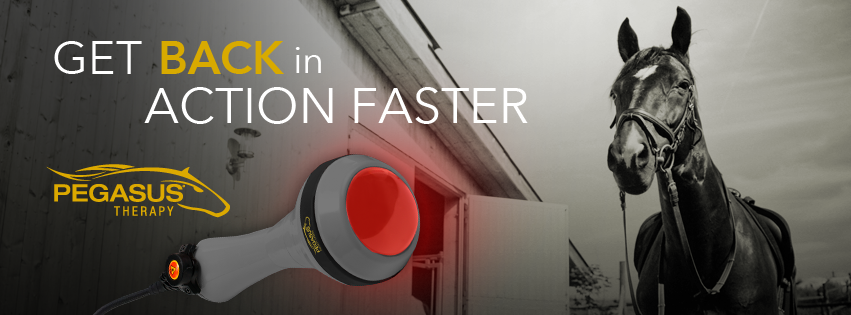Discover the Outstanding Advantages of Equine Therapy for Emotional Recovery
Discover the Outstanding Advantages of Equine Therapy for Emotional Recovery
Blog Article
Assessing the Efficiency of Laser Therapy in Horse Treatment for Injury Recovery
The evaluation of laser treatment's efficiency in equine injury recovery pivots on several aspects, including recuperation time, pain reduction, and cells regrowth. Vets regularly observe remarkable end results with laser treatment contrasted to traditional techniques, positioning it as a vital aspect in equine treatment.
Comprehending Laser Therapy
Laser therapy has actually ended up being a pivotal device in veterinary medicine, particularly in the therapy of equine problems. Recognized for its non-invasive nature and efficacy, laser therapy involves the application of certain wavelengths of light to stimulate cells fixing and decrease inflammation. This restorative modality is progressively favored for its capacity to accelerate the healing process in steeds suffering from a range of bone and joint injuries and persistent conditions.
The primary device behind laser treatment is its capacity to improve cellular features. In addition, laser treatment promotes vasodilation, enhancing blood circulation and oxygen shipment to damaged cells, thus expediting healing.
In equine medicine, laser therapy is specifically helpful for conditions such as tendonitis, osteo arthritis, and wound healing. The method is lauded for its pain-relieving homes, permitting horses to regain wheelchair and function a lot more quickly. Vets likewise value its marginal side results contrasted to other treatment techniques, making it a dependable and safe option for equine care.

How Laser Therapy Works

Upon absorption, these photons set off a series of biochemical adjustments, enhancing mitochondrial function and leading to raised adenosine triphosphate (ATP) manufacturing. This increase in ATP accelerates mobile metabolic process, advertising tissue repair and regrowth. Furthermore, laser therapy modulates inflammatory actions by affecting cytokine degrees and minimizing oxidative tension, therefore alleviating pain and swelling.
An additional significant facet of laser therapy is its role in enhancing microcirculation. The treatment promotes vasodilation, boosting blood circulation and oxygen shipment to broken tissues (Equine Therapy). This promotes the removal of mobile debris and sustains the expansion of fibroblasts and collagen synthesis, essential for injury healing
Professional Evidence
The effectiveness of laser treatment in equine treatment has actually been substantiated with various clinical studies, showcasing its restorative possible across a variety of problems. Several regulated tests and empirical research studies have actually recorded significant enhancements in tissue repair service, discomfort reduction, and overall rehab timelines. For instance, a research conducted by Turner et al. (2012) showed that steeds treated with low-level laser therapy (LLLT) for tendon injuries displayed accelerated recovery contrasted to those receiving traditional therapies. The research study highlighted a marked decrease in swelling and boosted collagen formation.
In a similar way, study by Johnson and colleagues (2015) concentrated on equine muscle injuries, disclosing that laser therapy dramatically accelerated muscle fiber regrowth and minimized muscle tightness. Clinical analyses have shown that laser therapy can ease chronic problems such as osteoarthritis.
Veterinarian Insights

Vets additionally value the flexibility of laser therapy. She aims out that laser treatment can be tailored to the specific demands of each steed, making sure optimal end results.
Additionally, veterinarians value the ability to incorporate laser therapy with other therapy techniques. This multimodal method can enhance total treatment efficacy, giving a detailed service for equine rehab. Such endorsements from skilled experts underscore the growing approval and application of laser therapy in equine medication.
Practical Considerations
A key element of executing laser treatment in equine treatment entails comprehending the practical considerations that guarantee its efficacy and safety and security. First and primary, it is essential to pick the suitable laser tool, as various kinds differ in wavelength, power, and infiltration deepness. Equine Therapy. Vets should be fluent in these parameters to tailor therapy protocols successfully per injury type
Additionally, the regularity and duration of laser therapy sessions require careful preparation to make best use of healing benefits while reducing any possible unfavorable results. Consistent tracking of the steed's response to treatment can assist essential adjustments in the therapy program. Developing a secure and controlled environment during treatments is likewise vital to avoid unexpected direct exposure to laser exhausts, which can harm both the horse and the handler.
Training and qualification of employees administering laser therapy are paramount to guarantee appropriate method site web and to maintain security requirements. Furthermore, maintaining precise documents of each session, including laser settings and observed outcomes, is important for assessing the general effectiveness of the treatment and for making data-driven decisions.
Conclusion
Laser treatment has actually become an efficient technique in equine injury rehab, providing substantial benefits in recuperation time, discomfort relief, and tissue healing. Clinical researches emphasize considerable enhancements in conditions such as tendonitis and osteoarthritis, connected to boosted cellular function and raised ATP manufacturing. Veterinarian observations corroborate these searchings for, highlighting premium end results compared to traditional treatments. For ideal results, continual surveillance and personalized treatment methods stay important in leveraging the complete capacity my link of laser therapy in equine treatment.
Report this page